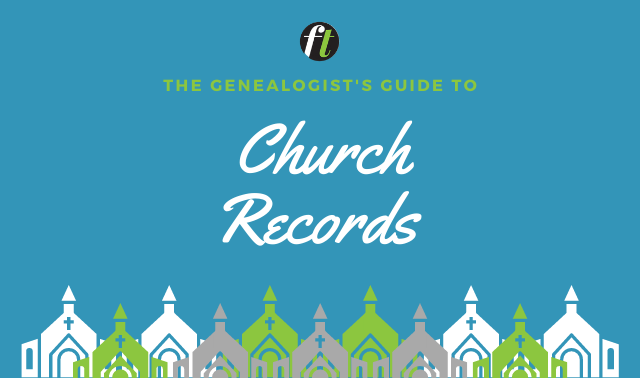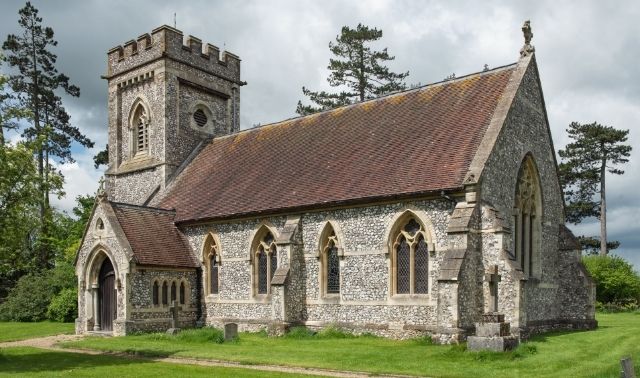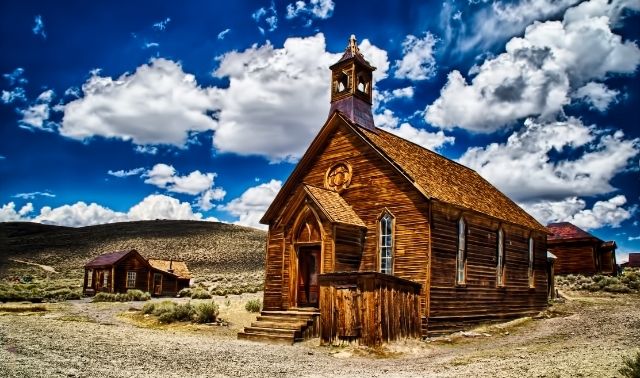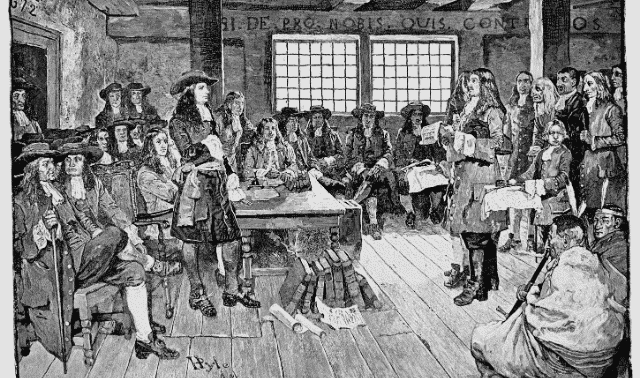Sign up for the Family Tree Newsletter! Plus, you’ll receive our 10 Essential Genealogy Research Forms PDF as a special thank you.
Get Your Free Genealogy Forms
"*" indicates required fields

Lutheranism is probably the largest Christian denomination named for someone other than Jesus Christ. While the starting principle of Lutheranism is that salvation comes from “faith not works,” genealogists with Lutheran ancestors can be thankful their forebears worked hard at producing loads of helpful records. Here’s how to find
A History of Lutheranism in Europe and the United States
Martin Luther was an Augustinian monk and professor who, in 1517, challenged the medieval Catholic church’s materialism. He disputed, among other things, the ability to buy an “indulgence” as a way of obtaining pardon for the sins of the deceased. Though he tried to reform Roman Catholicism from within, he wound up founding the first substantial group in Western Europe to be independent of the Catholic Church.
Nonreligious events helped Luther’s cause. Many rulers of small German states seized upon religious discord as a path to greater independence from the Catholic-dominated Holy Roman Empire. Luther also used the newly invented printing press to widely disseminate his views.
Within a few decades, much of central and northern Germany had turned Lutheran. The faith soon gained a foothold in Scandinavia, where national Lutheran churches were established by the early 1600s. Small Lutheran minorities existed across Europe from the British Isles to eastern Europe.
In the German states, subjects were to follow the religion of their ruler. The Peace of Augsburg allowed Lutheranism as a choice as early as 1555. The reality was more complicated, due to the existence of other Protestant groups such as the Reformed church.
Evangelical and Old Lutherans
During the early 1800s, the Kingdom of Prussia forcibly united Lutheran and Reformed worshipers under the name “Evangelical.” Congregations that dissented from this union became known as the “Old Lutherans.”
In America, Dutch Lutherans helped populate New Netherland (today’s New York) in the 1620s, though most people in this colony were Reformed. But the first New World settlement with a Lutheran majority was the New Sweden colony in the Delaware River region of what’s now Pennsylvania, Delaware and New Jersey.
Lutherans made up the most prominent religious group among the large population of 18th-century German-speaking immigrants, most of whom settled in the Mid-Atlantic states. In the 1800s, many more German Lutherans came to America and settled the Midwestern territories and states. Joining them were increasing numbers of Lutheran Swedes, Danes, Norwegians and Finns. Some Eastern European Lutherans, mostly of German heritage, also came from areas of Russia and Ukraine.
Lutherans themselves have splintered into smaller denominations. Around the world, some 250 groups have a total membership estimated at 73 million. Lutheran congregations in America since the mid-1700s have joined in larger church bodies called “synods,” which are officiated by bishops.
Lutheran denominations run the gamut in both polity and politics; some are hierarchical and others more congregational. Records are kept on the congregational level, but denominational archives in many cases have microfilmed copies.
Today in the United States, the largest Lutheran denomination is the moderate-to-liberal Evangelical Lutheran Church in America, with about 4.2 million members. The ultraconservative Lutheran Church-Missouri Synod is the second-largest with about 2.5 million.
What Records Lutheran Churches Keep
Records generated by and about Lutherans abound. Be aware that many of the records in the 1700s and 1800s are written in the language of the Lutheran immigrant group (and, just to confuse you further, they often use an archaic cursive script). As a rule of thumb, city churches began recording in English earlier than in countryside areas, which often were settled by ethnically distinct groups.
In many cases, you can access records on FamilySearch or by contacting the church or an administrative archives. But also check the subscription genealogy website Archives.com, which has announced a project to digitize and index the Evangelical Lutheran Church in America’s 1,000 reels of microfilm containing millions of baptism, confirmation, marriage and funeral records. The parish register ledger books document Lutheran congregations throughout the United States from 1793 to 1940.
Among the best records for Lutheran genealogy research:
- Baptism: Lutheran groups practice infant baptism. Nearly all congregations keep registers listing the names of the child, parents and sponsors (the “godparents,” who often are close relatives or friends), as well as dates of birth and baptism. Occasionally, you’ll find additional notations, such as the illegitimacy of the child or maiden name of the mother. Many 18th- and 19th-century registers have been abstracted (and some have been published), but because of the potential for transcription errors, your best bet whenever possible is to access the original. Look at the FHL, or contact either the local congregation or, if it no longer exists, a denominational archive.
- Marriages: Records show the date of the marriage, couple’s names and sometimes their residences before marriage. Some also give the names of the bride’s and groom’s parents. Because many American Lutheran congregations shared ministers who “rode a circuit,” it’s not uncommon to find several churches’ marriages in the records of whatever congregation was considered the “seat” of the multicongregation parish at the time. It’s important to learn the history of the congregation and what churches it shared a minister with.
- Burials: Relatively fewer congregations kept registers of those its ministers buried, but some do exist. The burial register usually recounts the funerals performed by that church’s minister, and the deceased wasn’t always a church member. Those listed might have been of a different denomination and be buried in a different cemetery from church members.
- Confirmations: Lutheran children were “confirmed” into the faith during their teens. These records generally list only the names of those confirmed, though some registers also give the confirmands’ ages and names of their fathers. Researchers most often use these when there’s a gap in the baptismal register.
- Communions and membership lists: Membership in Lutheran congregations was far more fluid in the first centuries of US settlement than it is today. Churches didn’t frequently list their members; however, most congregations have at least a few preserved lists showing the names of those who communed and the date of communion, usually grouped by family.
- Financial and minutes: Few congregations have preserved the earliest books showing the church’s accounting of funds. Likewise, minutes of their governing councils often don’t exist, but the rare ones that do offer keen insights into the running of the congregations.
- Congregational and synodical histories: Lutherans loved to write histories, both of their congregations and the synods to which they belonged. Profiles of individual churches can be genealogical gold mines: They often include some of the pastoral records mentioned above and give information about the church’s member families throughout its history.
- Newspapers: Some Lutheran synods published newspapers, primarily during the 19th century, that can serve as an alternate source for obituaries of church members. You also can glean a thick slice of life about the congregants during the time period. Find names and locations of these titles by entering Lutheran as a keyword in the Chronicling America newspaper directory.
Lists of Lutheran parish burials are less common than baptisms and marriages, but some do exist in the form of funerals the church’s minister performed. Keep in mind the deceased wasn’t always a church member, and might be buried in a different cemetery. In addition, much of the script in Lutheran church records of all types is in the language of the immigrant group that predominated in that particular parish—usually, German, Swedish, Norwegian, Danish or Slovakian. This burial register of the Trinity Lutheran Church in Reading, Pa., dates from 1811 and 1812. Although it’s written in German, the script is more Latin-looking than the writing you’ll find in many early church books of German-speaking Lutherans.
Finding Records from Union Churches
While Lutheranism has the cachet as the first breakaway Christian group to stick, further splintering followed in short order. Especially among German-speaking US immigrants, many early congregations shared church buildings in what were called “union churches,” some of which didn’t keep their early records distinct. Here’s the lowdown on two significant groups:
Reformed
The religion known simply as “Reformed” was nurtured in German Switzerland by Ulrich Zwingli and in French Switzerland by John Calvin. It became established in some German states and the Netherlands (Calvin’s teaching also led to Presbyterianism in Scotland), and was the second-largest religious group among 18th-century German-speaking US immigrants. Reformed churches’ “congregational” polity—in which their higher church bodies “speak to them, not for them”—resulted in less-standardized record-keeping and many private pastoral registers of baptisms and marriages. German Reformed congregations in the United States joined with Evangelicals in the 1930s and eventually became the United Church of Christ. Most records are on the congregational level, but the Evangelical and Reformed Historical Society archives in Lancaster, Pa., has many historical materials.
The Moravian Church
The Moravian Church (the denomination formally known as Unitas Fratrum or Unity of Brethren) dates to the teaching of Jan Hus, who was burned at the stake as a heretic in 1415. In the 1740s, Moravians founded Bethlehem, Pa., as their headquarters, and had a number of congregations in Mid-Atlantic and Southern states in Colonial times. Their carefully kept congregational diaries, detailed memoirs of members and other records are popular sources for researchers with ancestors in or near Moravian settlements. The Moravian Archives is in Bethlehem.
Lutheran Genealogy Records at a Glance
Baptisms
Nearly all congregations keep registers of this excellent birth record substitute. Most of the earliest (1700s) have been published; many from the 19th century have been abstracted; and FamilySearch has microfilmed many of the originals. Also check the collection of digitized Lutheran records on Archives.com.
Marriages
These records sometimes include names of the couple’s parents as well as their residences. In addition to records kept by individual congregations, pastors sometimes kept their own registers.
Congregational histories
Most congregations have celebrated landmark anniversaries with historical publications ranging from pamphlets to hardbound books. These often are chock-full of names and photos of people from the church’s days gone by.
Genealogy Q&A: Lutheran Ancestors in Chicago
Q: My Lutheran ancestors settled in Chicago. Where should I look for information on old Lutheran churches there?
A: Norwegians who arrived in Chicago in the 1830s formed the first Lutheran congregations. Elling Eielsen, the first Norwegian Lutheran pastor in America, ministered to them and helped found what became Trinity Lutheran Church in the immigrant community along Milwaukee Avenue. In 1848, “high church” Norwegians in the Loop area founded what became First Norwegian and later Lake View Lutheran.
Swedish Lutherans formed their own church, Immanuel Swedish Lutheran Church, in 1853, meeting at first in the First Norwegian Lutheran building. In 1860, they founded the Scandinavian Augustana Synod, which became entirely Swedish with the departure of Norwegians and Danes in 1870.
Today, the originally Norwegian and Swedish church groups, among others, are reunited as the Evangelical Lutheran Church in America (ELCA). Read more about Lutheran history in Chicago here. Subscription site Archives.com has 4.6 million ELCA birth, marriage and death records.
German-speaking Lutherans in Chicago mostly belonged to the Missouri Synod, which traces its local origins to what is now First Saint Paul’s Evangelical Lutheran Church, built in 1844. The first pastor, Augustus T. Selle, arrived in 1846, and convinced the congregation to become Lutherans. The Missouri Synod was organized at Saint Paul’s in 1847. Read more on the church’s history here.
Answer provided by David Fryxell, from the September 2013 issue of Family Tree Magazine
Lutheran Records Resources
Websites
Genealoger: Lutheran Genealogy
Lutheran Historical Society of the Mid-Atlantic
Publications
A Brief History of the Lutheran Church in America by Juergen Ludwig Neve (Nabu Press)
Early Lutheran Baptisms and Marriages in Southeastern Pennsylvania (Genealogical Publishing Co.)
A History of Lutheranism by Eric W. Gritsch (Fortress Press)
Understanding and Using Baptismal Records by John T. Humphrey (Humphrey Publications)
Organizations and Archives
Concordia Historical Institute (Lutheran Church-Missouri Synod)
Evangelical Lutheran Church in America Archives
Lutheran Archives Center at Philadelphia
Norwegian American Genealogical Center and Naeseth Library
A version of this article appeared in the July/August 2012 issue of Family Tree Magazine.




